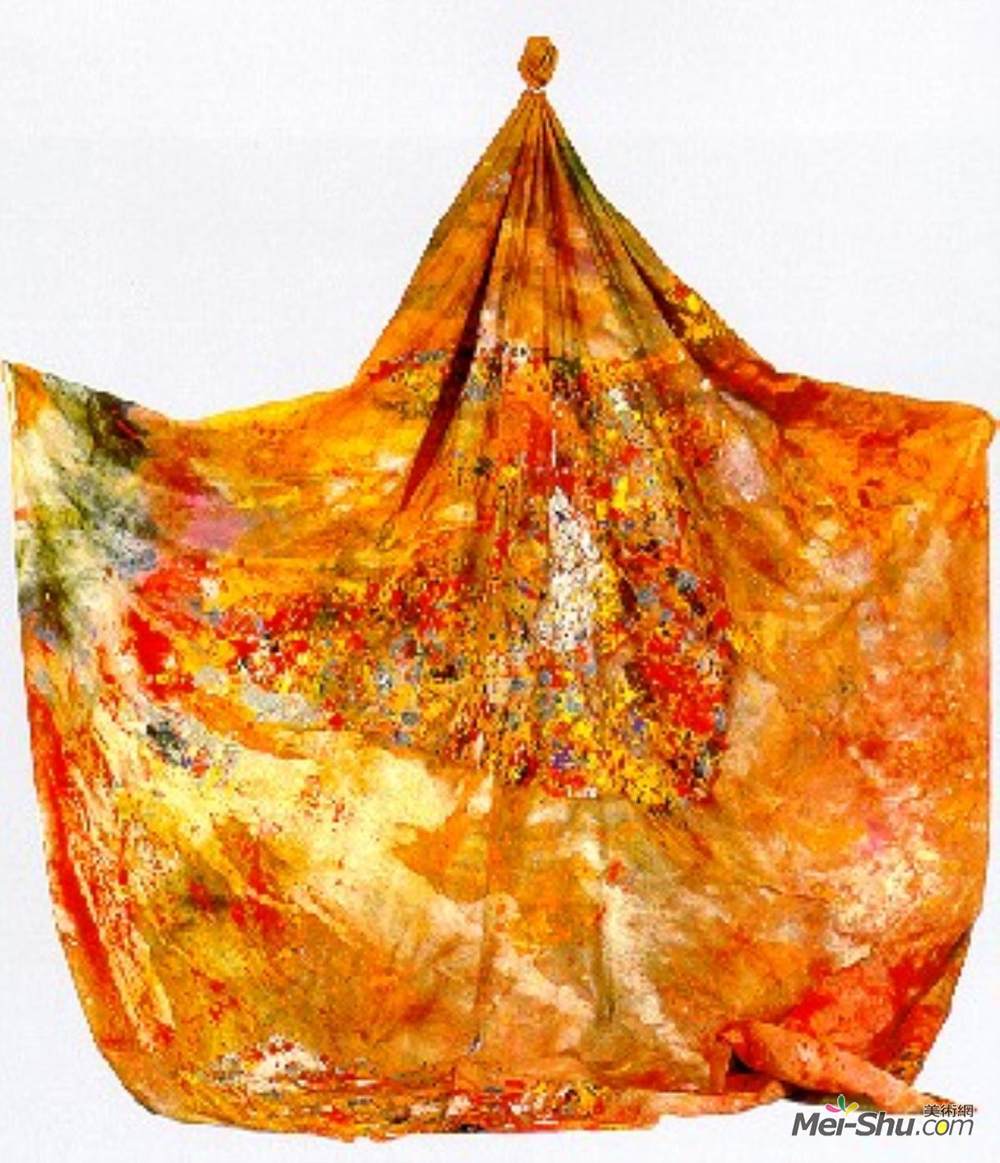 山姆·吉列姆(Sam Gilliam)高清作品《火星在角度》
山姆·吉列姆(Sam Gilliam)高清作品《火星在角度》
作品名:火星在角度
艺术家:山姆·吉列姆
年代:1978
风格:抒情抽象
类型:雕塑
借助于聚丙烯等新材料,吉利姆能够把滚滚的图像从墙上拿下来,或者把它们竖起来,有时放在木制的电枢上,就好像它们是雕塑一样。但事实上,Gilliam的图像总是被想象成绘画,尽管像拓扑描述一样的绘画可以根据他的绘画意图被折叠、覆盖,或者被赋予虚拟洞穴和真实洞穴。像早期俄国大师弗拉基米尔·塔特林一样,吉利姆敏锐地意识到角落中隐含的三角形的空间优势,或者如本作品的标题所示,角度。在盎格鲁的Mars,他充分利用了他绘画背后隐藏的阴影空间。华丽的色彩从天花板上的一个点层叠起,并附在墙的两个角度,暗示着角落深处隐藏的轴线。Gilliam的窗帘流畅,让人联想到文艺复兴时期的秃头鹰,一顶编织得很丰富的织物,似乎没有作曲家的意图,但事实上,是精心控制以提供结构连贯性。这里隐藏着几何轴和对角线,这些轴和对角线与文艺复兴时期伟大的布艺大师之一的绘画结构十分明确,比如威尼斯人保罗·韦罗内塞。尽管这幅画是立体的,但基本上是一幅画,其中早期的习俗在自由的实验精神中得到复兴。
Title:Mars at Angles
artist:Sam Gilliam
Date:1978
Style:Lyrical Abstraction
Genre:sculpture
With the aid of new materials, such as polypropylene, Gilliam was able to bring his billowing images off the wall, or stand them, sometimes on wooden armatures, as though they were sculptures. But in fact, Gilliam's images are always envisioned as paintings, albeit paintings that like topological descriptions could be enfolded, draped, or given virtual cavities and real cavities, depending on his pictorial intention. Like the early Russian master Vladimir Tatlin, Gilliam was keenly aware of the spatial advantages of the triangular form implicit in corners, or, as the title of this work suggests, angles. In Mars at Angles, he takes full advantage of the shadowy space secreted behind his painting. The gorgeous panoply of color cascading from a single point in the ceiling, and attached at the two angles of the walls, suggests a hidden axis in the very depths of the corner. The flow of Gilliam's drapes, so suggestive of a Renaissance baldacchino, a canopy of richly woven fabric, seems free of the composer's intention, but in fact, is carefully controlled to offer structural coherence. There are hidden geometric axes and diagonals here that are quite as explicitly structural as a painting by one of the great Renaissance masters of drapery, such as the Venetian, Paolo Veronese. Despite its three-dimensional aspect, this work is fundamentally a painting, in which earlier conventions are revitalized in a free experimental spirit.
作品名称:《火星在角度》山姆·吉列姆(Sam Gilliam)高清作品欣赏
作品链接:https://www.mei-shu.com/famous/25780/artistic-154590.html
作品类别:油画
免责声明:本站部分公开资料来源于互联网,目的是用于学术交流与讨论,并不代表本网赞同其观点和对其真实性负责。如果您认为我们的侵犯了您的权益,请与我们联系(banquan#mei-shu.com #替换为@),我们将在第一时间删除相关内容。